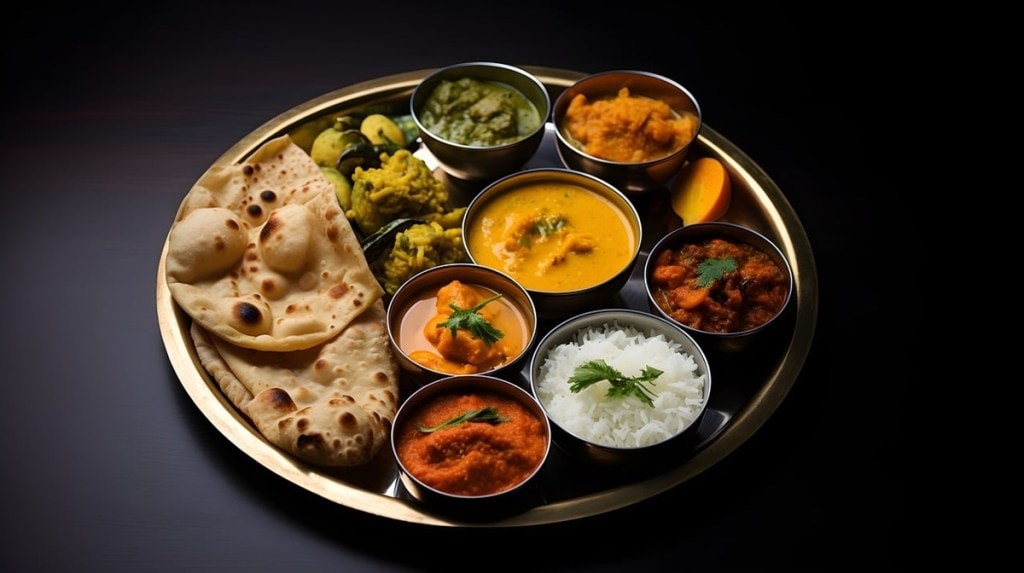Even as the cost of both home-cooked veg and non-veg thalis increased in the month of October, you continued to still pay more for your vegetarian thali in comparison to the chicken thali. During the previous month, the cost of veg thali rose 20 per cent and that of non-veg thali, after declining for 12 consecutive months, clocked a 5 per cent increase in October. If you prefer chicken over daal and veggies, you continued to pay less in the previous month even after the drop in prices. The prices increased due to rise in prices of onion, tomato and potato, said Crisil’s monthly indicator of food plate cost – The Roti Rice Rate.
The average cost of preparing a thali at home is calculated based on input prices prevailing in north, south, east and west India. The monthly change reflects the impact on the common man’s expenditure. The data also reveals the ingredients (cereals, pulses, broilers, vegetables, spices, edible oil and cooking gas) driving the change in the cost of the thali.
While a veg thali comprises roti, vegetables (onion, tomato and potato), rice, dal, curd and salad, a non-veg thali has the same elements, except for dal, which is replaced by chicken (broiler).
According to the CRISIL MI&A Research estimates, the cost of home-cooked non-veg thali increased by 5 per cent. The report stated that an estimated decline of 9 per cent on-year in broiler prices led to relatively slower uptick, while the prices of vegetables witnessed an increase. Broiler poultry accounts for 50 per cent of the non-vegetarian thali cost and vegetables account for almost 22 per cent of the cost.
Meanwhile, the veg-thali prices increased by 20 per cent due to an increase in the prices of vegetables, which collectively account for approximately 40 per cent of the thali cost. During the month of October, prices of onion and potato went up by 46 per cent and 51 per cent on-year, respectively, because of lower arrivals due to incessant rainfall in September. Further, rainfall in Maharashtra and Karnataka have delayed onion harvests and cold storage stocks of rabi potato, which accounts for around 95 per cent of annual potato production, are declining due to the season end, while fresh arrivals are slated to begin from Dec-Jan.
Prices of tomato more than doubled from Rs 29/kg in October 2023 to Rs 64/kg in October 2024 due to September rains that impacted arrivals from states such as Maharashtra, Karnataka and Andhra Pradesh due to crop damage and festive demand. However, with supplies from Madhya Pradesh, Rajasthan and Himachal Pradesh, the prices are expected to stabilise in November. Tomatoes account for approximately 14 per cent of the veg thali cost.
Moreover, the report stated, the price of pulses, which account for 9 per cent of the veg thali cost, rose 11 per cent due to an 11 per cent lower opening stock, a lower stock pipeline and festive demand. Prices are expected to dip from December once fresh arrivals begin. Further, an 11 per cent drop in fuel cost – from Rs 903 for a 14.2 kg LPG cylinder in Delhi in September last year to Rs 803 in March this year – capped the further increase in the thali cost.
Now, on a month-on-month basis, the cost of both veg and non-veg thali rose by 6 per cent and 4 per cent respectively, majorly driven by rise in prices of tomato by 39 per cent on-month to Rs 64/kg in October amid heavy rainfall in the tomato growing areas, which impacted market arrivals. Onion prices too went up by 6 per cent on-month because of incessant rainfall in Maharashtra, Karnataka, Telangana and Andhra Pradesh, which damaged crops and delayed kharif harvests by 10-15 days. Also, vegetable oil prices rose by 10 per cent on-month in October on account of increase in import duty coupled with healthy festive demand. For the non-veg thali, an estimated stable broiler prices on-month helped prevent further uptick in cost.
During the previous month, that is September, the cost of non-veg thali declined by 2 per cent, while that of veg thali rose by 11 per cent on-year.
